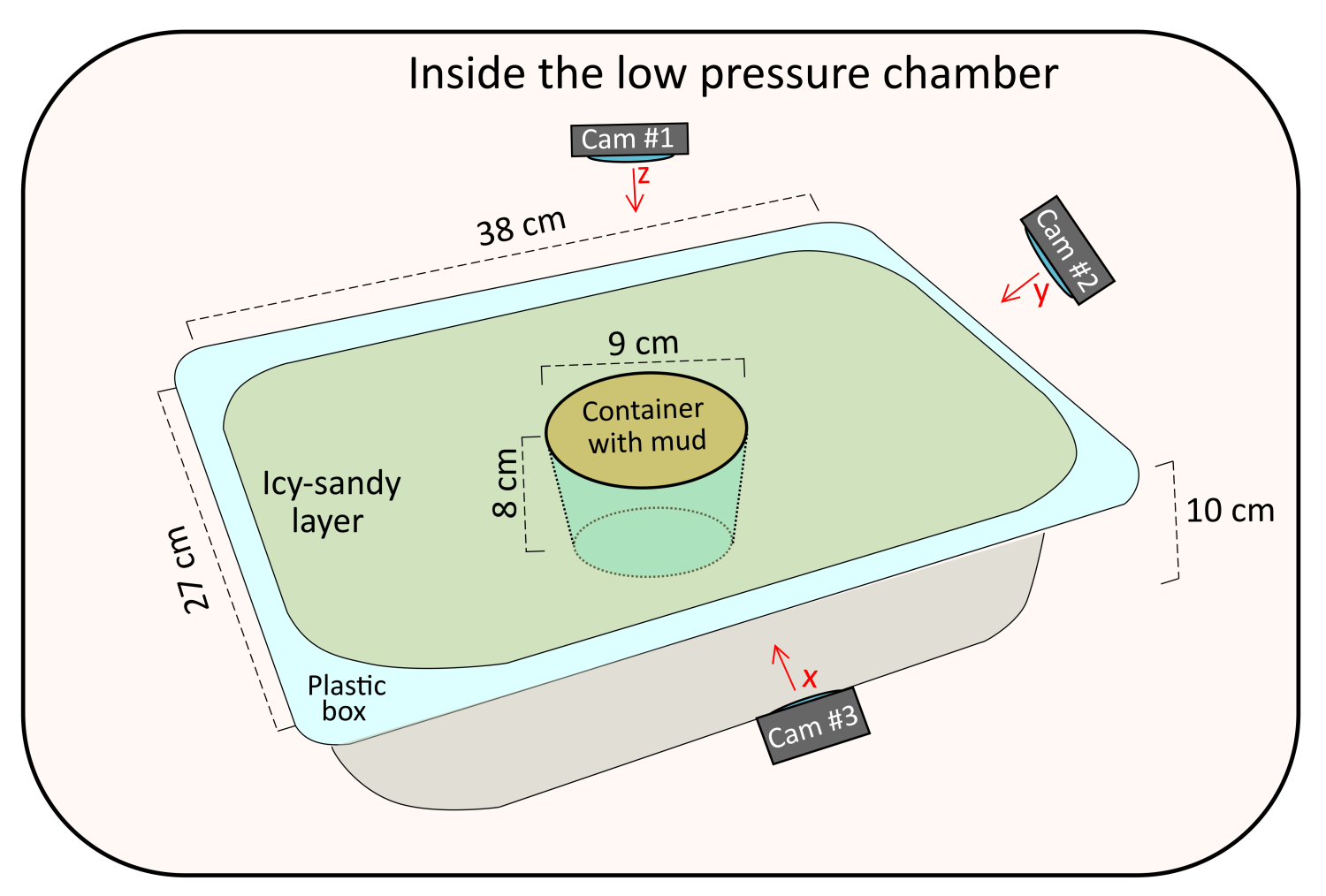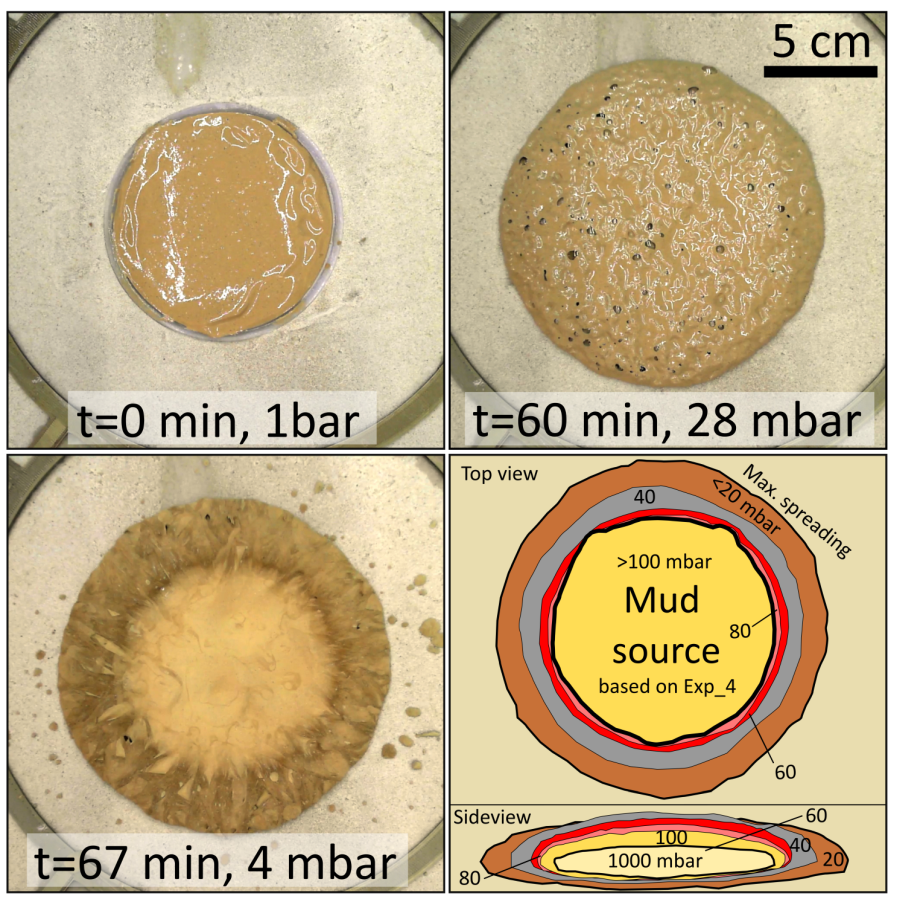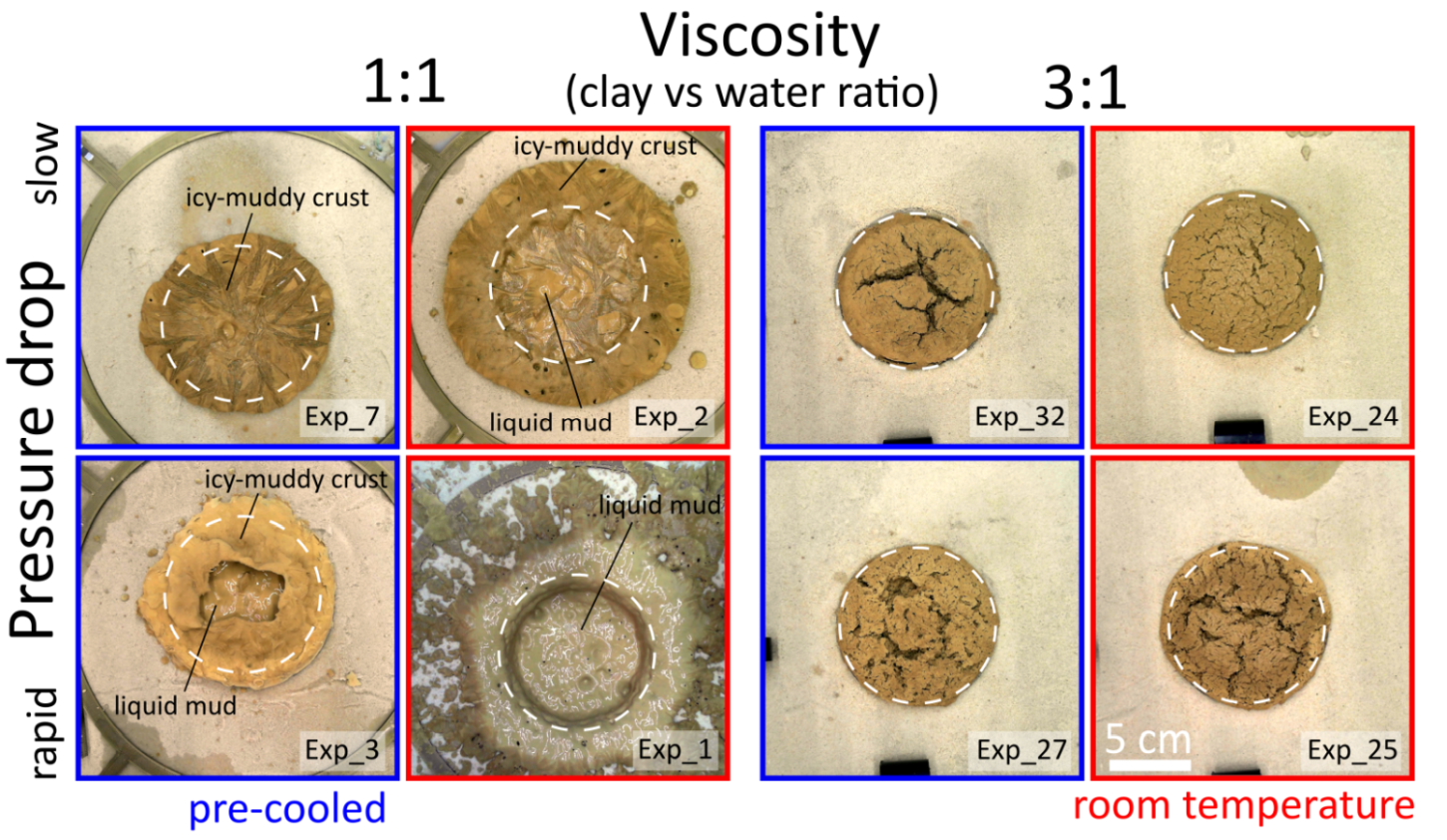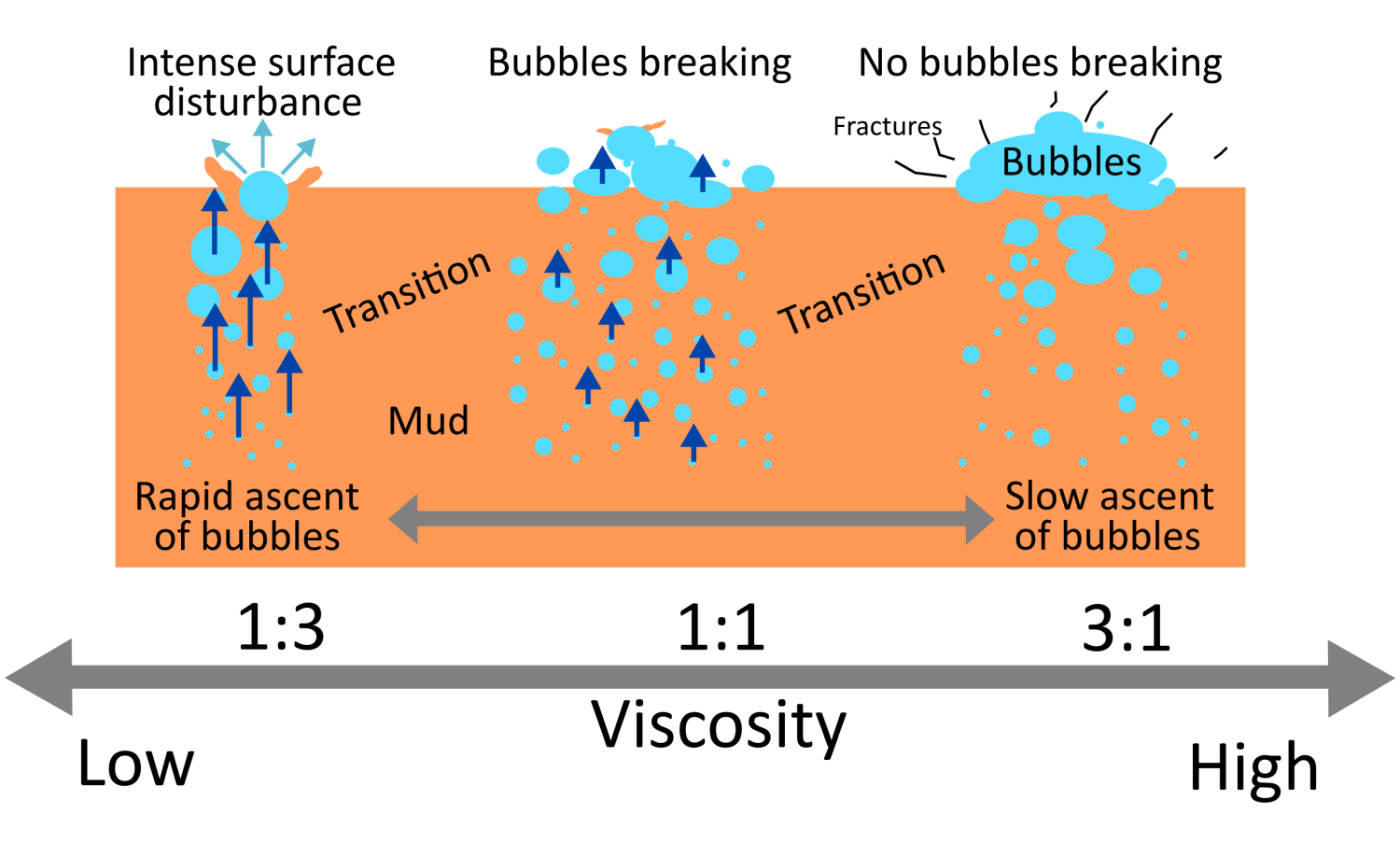- 1Institute of Geophysics of the Czech Academy of Science, Prague, Czech Republic
- 2School of Physical Science, STEM, The Open University, Milton Keynes, UK Open University, Milton Keynes, United Kingdom
- 3CNRS UMR-6112 LPG Nantes, France
- 4Centre for Earth Evolution and Dynamics (CEED), University of Oslo, Norway
- 5Institute of Planetary Research, DLR, Berlin, Germany
- 6Space Science and Technology Department, STFC Rutherford Appleton Laboratory, Oxford, UK.
Introduction: The behavior and the rheology of mud during the emplacement of terrestrial sedimentary volcanism has been previously investigated (e.g., [1,2]). In contrast, this is not the case for Mars nor for other planetary bodies within the Solar System for which sedimentary volcanism has been proposed [e.g., 3]. The propagation behavior of low viscosity mud in a low-pressure chamber that partly simulated the surface environment of Mars was experimentally studied for the first time by [4,5]. Their work revealed that low viscosity mud flows could propagate over cold (<273 K) and warm (>273 K) surfaces at martian atmospheric pressure, however, the mechanism of such propagation is different to that observed on Earth. On Mars, mud propagating over cold surfaces should rapidly freeze due to evaporative cooling [6] forming an icy-crust leading to propagation in a similar manner to pahoehoe lava flows on Earth [4]. In contrast, mud propagating over a warm surface boils and levitates above the surface. The viscosity of ascending mud varies depending on its water content, and the behavior of high viscosity mud under martian atmospheric pressure remains unexplored.
Experimental setup: We used the Mars Simulation Chamber at the Open University (UK) into which we inserted a 0.9 × 0.4 m plastic box filled with a ~10 cm thick layer of natural sand (ø ~200 µm) mixed with water to limit the infiltration of mud into the sand and to better maintain the temperature below 0°C. Inside was placed a container to accommodate 600 ml of mud (Fig. 1). The infilled box was cooled to a temperature of ~-20°C. The temperature of the mud when inserted into the container was 1-3°C and 20-22°C respectively. Two different viscosities were tested – the first mix contained 50 wt% clay (a bentonite composed of 76% montmorillonite, 23% illite and 1% kaolinite) and water (1:1 mix). The other was prepared by mixing 75 wt% clay with 25 wt% water (3:1). The pressure was gradually reduced from 1 bar to 6 mbar within a timeframe of minutes (rapid) or in >hour (slow). Each experimental run was triplicated to confirm reproducibility.
Observations: With the 1:1 mixture, once the atmospheric pressure was reduced, the mud started to boil (Figure 2). In the case of mud at room temperature and a rapid pressure drop, significant boiling caused an ejection of muddy droplets from the container into the surroundings. Such behavior was not observed for other experiments and mud was extruded due to the volumetric increase. Once the pressure dropped below 7 mbar, freezing occurred leading to the formation of an icy-muddy crust. Once this crust covered the entire mud surface, additional boiling and volumetric increase was limited. However, when the crust broke up, gasses were capable to escape and the deflation was observed.
For the 3:1 mixture vigorous boiling was not observed during the pressure drop. Instead, as the pressure decreased, the mud volume increased and sets of cracks developed on the surface. Regardless of the tested parameters, the volumetric increase was observed during all experiments as bubbles within the mud developed and increased their volume. In the case of 1:1 and 3:1 mixture the mud inflation reached up to ~15% and ~28% respectively (the observed volumetric changes were quantified by semi-manual processing of selected images using the PIV [Particle Image Velocimetry] and photogrammetry methods). In addition, we also observed a partial collapse of the newly formed foamy edifice as the gas trapped inside the mud escaped. This inflation and deflation of the mud often repeated and the magnitude of volumetric change leads to different morphologies (Figure 3).
Discussion and conclusion: The volumetric increase is caused by the formation of small water vapor bubbles which are trapped within the mud (Figure 4). The buoyancy of the bubbles is not sufficient to overcome the drag force within the viscous material and rise to the surface. Hence, these bubbles remain trapped and gradually grow up to centimeter scale sizes. During their growth they push the mud out of the container resulting in horizontal and vertical inflation of the mud surface over cm- scales (e.g., see outlines in Figure 2). This behavior is not observed at terrestrial mud flows. Our experimental approach hence shows that viscous mud exposed to reduced atmospheric pressure behaves differently when compared to conditions on Earth.
Acknowledgments: The access to the Large Mars Chamber at the Open University was provided by Europlanet 2024 RI which has received funding from the European Union's Horizon 2020 research and innovation program under grant agreement No 871149.
References: [1] O’Brien and Julien (1988), Journal of Hydraulic Engineering 114 [2] Laigle and Coussot (1997), J. Hydraul. Eng., 123 [3] Ruesch et al. (2019) Nature Geoscience 12 [4] Brož et al. (2020), Nature Geoscience [5] Brož et al. (2020), EPSL 545 [6] Bargery et al. (2010), Icarus 210(1).

Fig. 1: Experimental setup.

Figure 2: A sequence of images capturing the volumetric change of 1:1 mud (T=1°C) depending on the pressure value. The simplified sketch shows the extent of such changes indicated with different colors.

Figure 3: Examples of morphologies resulting from inflation of the mud induced by low pressure conditions. The blue and red boxes mark different temperatures of the mud. Morphologies of 3:1 mud are relatively uniform, in contrast a wider variety exists for less viscous 1:1 mud. The white dashed lines mark the position of the 9 cm large container.
 Figure 4: Simplified concept of mud inflation due to the pressure drop. Behaviour of 1:3 mud based on work of [4].
Figure 4: Simplified concept of mud inflation due to the pressure drop. Behaviour of 1:3 mud based on work of [4].
How to cite: Brož, P., Kryza, O., Conway, S., Mazzini, A., Hauber, E., Sylvest, M., and Patel, M.: Volumetric changes of mud on Mars: Evidence from laboratory simulations, Europlanet Science Congress 2022, Granada, Spain, 18–23 Sep 2022, EPSC2022-548, https://doi.org/10.5194/epsc2022-548, 2022.

